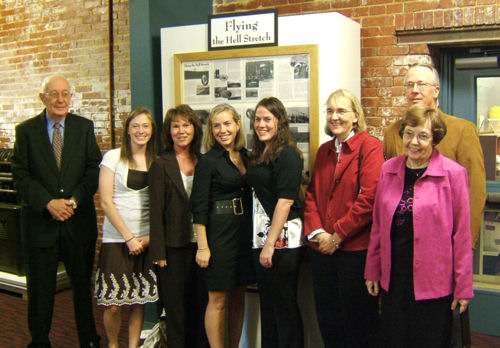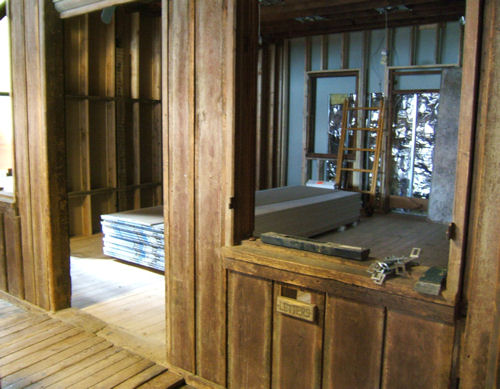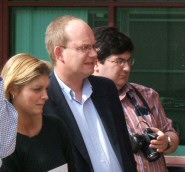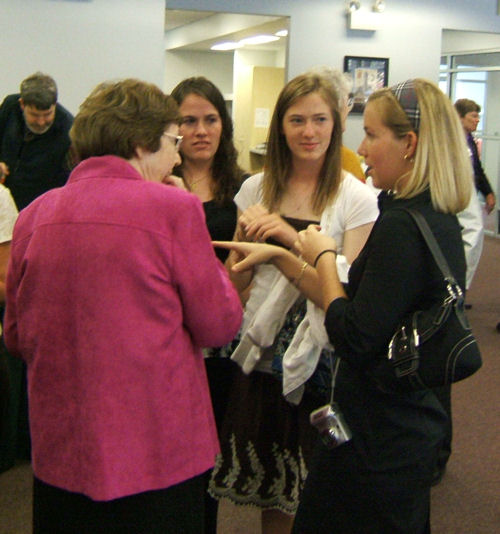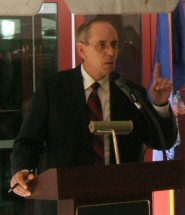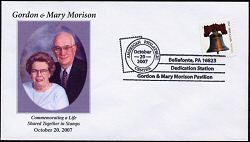
 |
Dedicated To Gordon and Mary
At the first day ceremony for the 2001 Love Letters stamps, during the combined Aripex-Nordia-AmeriStamp Expo show in Tucson, former Assistant Postmaster General Gordon Morison declared his love for his wife, Mary Morison, who was sitting in the audience.
At a smaller, but just as crowded, ceremony on Saturday, October 20, 2007, in Bellefonte, Pa., stamp collectors declared their love for Gordon and Mary, with the dedication of the Gordon and Mary Morison Pavilion at the American Philatelic Center.
American Philatelic Society past president Janet Klug, a VSC member, reminded Those attending the dedication of the earlier ceremony, tearing up as she mentioned it.
It was a bright fall day in Bellefonte, but very windy for the outdoor ceremony on the St. Louis Patio, which leads up to the Pavilion, the future home of the Smithsonian's Headsville Post Office.
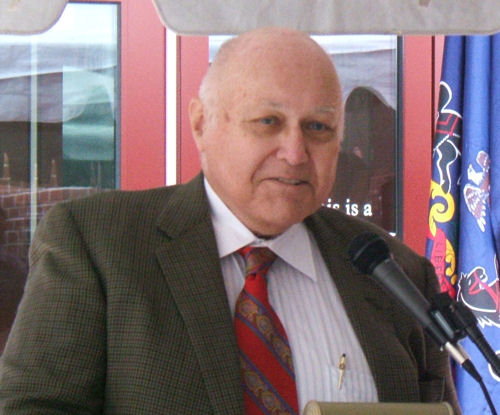 de Vries Philatelic Media |
| Former Postmaster General Benjamin Bailar. |
VSC member Charlie Peterson, Secretary of the American Philatelic Research Library and also its immediate past president, said he wanted to pay tribute to Mary Morison, "a strong philatelist in her own right." He said she was a collector, author, volunteer, and philatelic society officeholder, and "well deserves to be honored as part of the team."
In other words, her name isn't included the Pavilion's name just because she was Gordon's wife and the donors wanted it that way.
Bailar, another of the speakers, added that Mary pushed the APS to establish the spouse member program, and then was the first spouse member.
Bailar cited two accomplishments by Gordon Morison during his three years as PMG: He reduced costs and "I didn't get any grief" over the stamp program.
When Bailar's father wanted a stamp issued for the American Chemical Society's 100th anniversary, he said, Gordon showed him how that could be accomplished without running afoul of the stamp guidelines that state that specific organizations can't be commemorated.
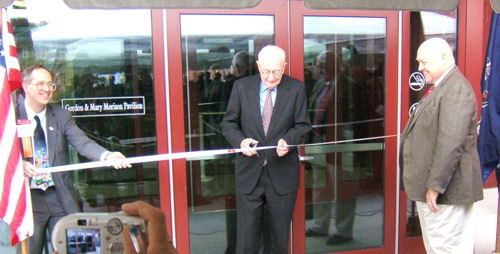 de Vries Philatelic Media |
| After the ceremony, Gordon Morison cut a "ribbon of coil stamps," aided by APS Deputy Executive Director Ken Martin, left, and Benjamin Bailar. |
Bailar was forced to sell his collection after he became Postmaster General, for fear anything that happened with stamps during his tenure would be seen as a conflict of interest designed to increase the value of his collection.
One of the prize possessions he lost was a proof of Sc. 803, the half-cent Benjamin Franklin stamp of the Presidential Series. Bailar's full name is "Benjamin Franklin Bailar;" it's not coincidence: He was named after a relative, who was named after the early American patriot. (However, he is not related to the statesman, "although with his nighttime activities, you never know.")
A few years after he left the Postal Service, and could resume collecting, Bailar said, he had lunch with Gordon, who pulled out the proof and handed it back to him. Gordon Morison had arranged, with his own money, for an agent to buy it, so that Bailar could once again own it.
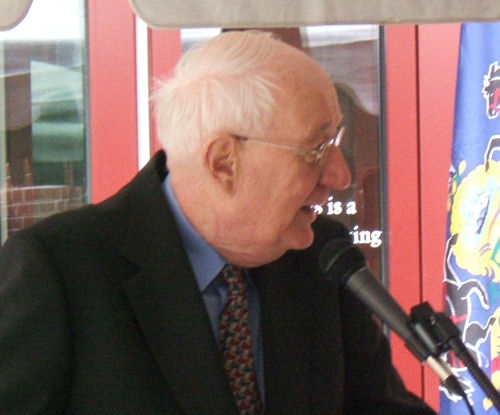 de Vries Philatelic Media |
| Gordon Morison. |
He and Mary met while Journalism students at Syracuse University. On their trips back to Pennsylvania to see their families after they were married, he'd stop at every post office along the way. "Shouldn't I be collecting something, while you're collecting?" she asked at one stop. He bought her a Canadian album, "because I didn't want her messing with U.S.," but she soon tired of that and moved on to other areas.
He described how he, Mary and other officers of the Rochester Philatelic Association decided to pick new countries and mount exhibits, to show other RPA members how it could be done. When the deadline arrived, Mary was the only one who'd actually done it.
"She was more of a collector than I was or will ever be," he said.
A postmark on the first day a stamp is issued, other than the "official" first-day city postmark, is called an "unofficial" by FDC collectors.
One of Mary's philatelic interests was first day covers, and for every stamp issued in Washington, she'd go to the Headsville Post Office and obtain its pictorial postmark on the new stamps.
"Finally, Mary has her own philatelic postmark," Gordon said.
And APS Executive Director Peter Mastrangelo promised that the first piece of mail from the Headsville Post Office in its new location, with its postmark, will go to Gordon Morison.
Other photos from the dedication:
